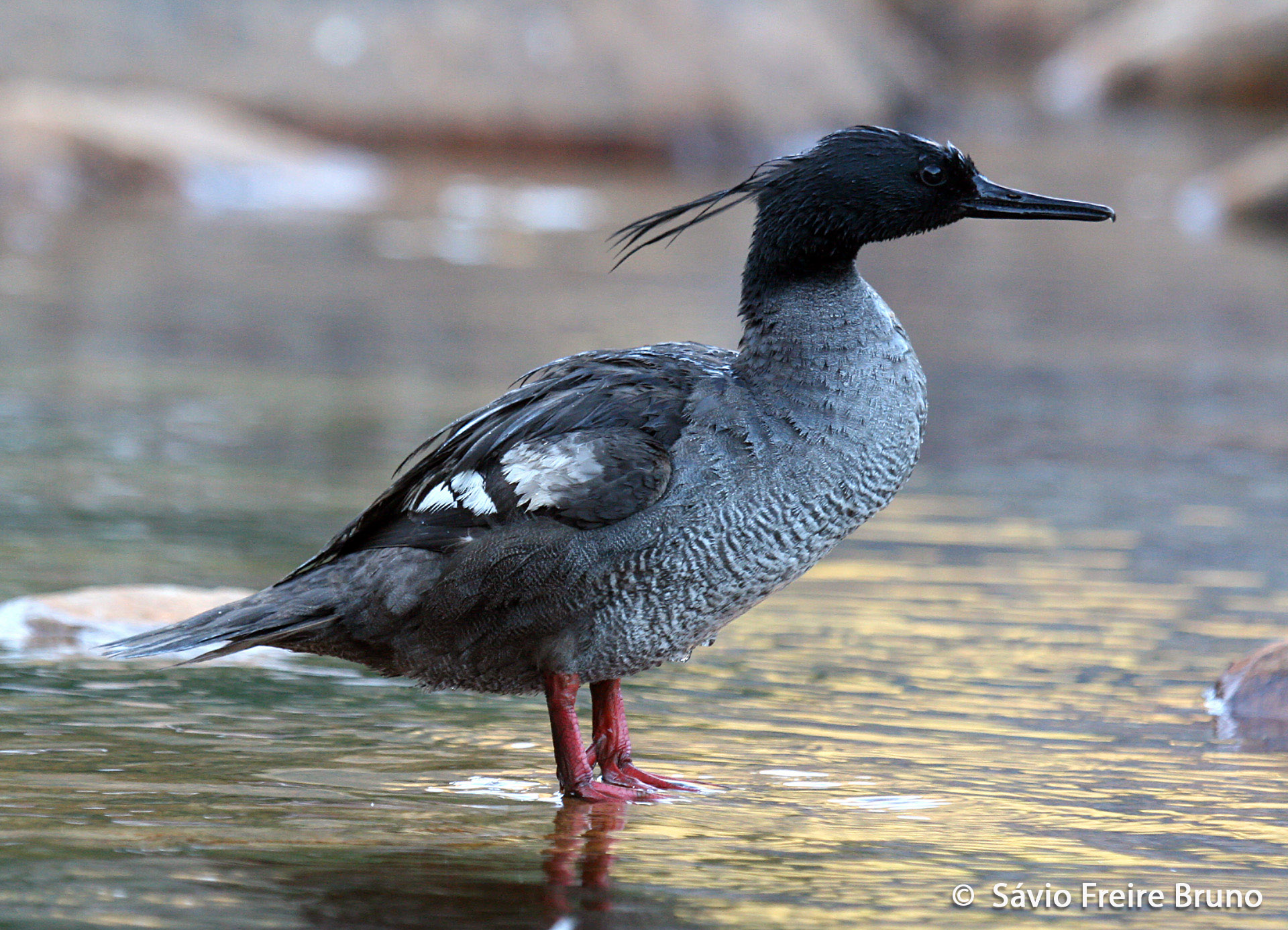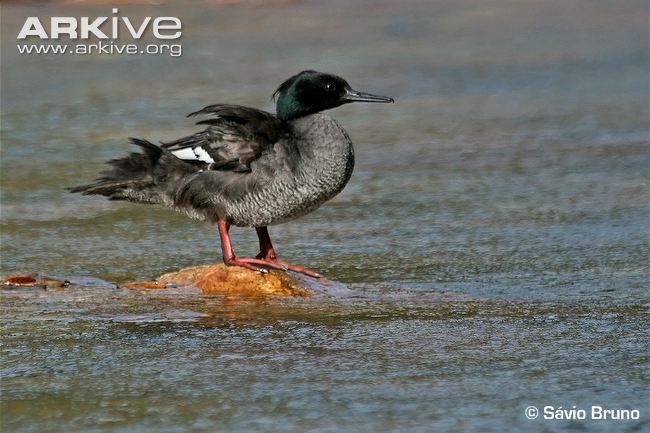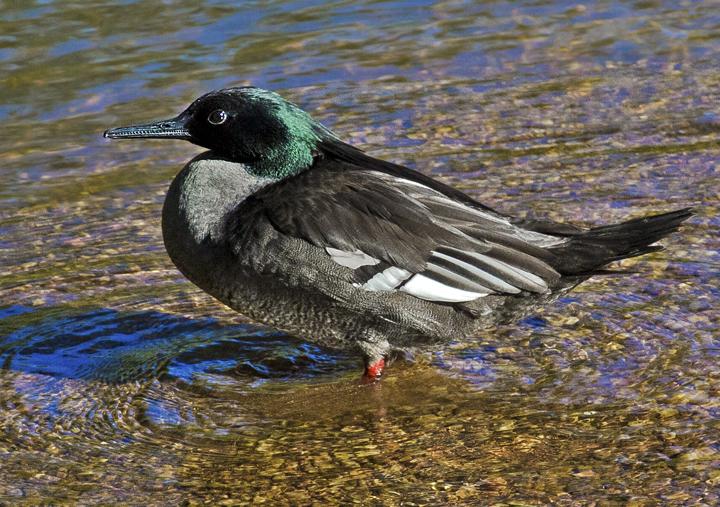
Mergus octosetaceus
SUBFAMILY
Merginae
TAXONOMY
Mergus octosetaceus Vieillot, 1817, Brazil. Monotypic.
OTHER COMMON NAMES
French: Harle huppard; German: Dunkelsдger; Spanish: Serreta
Brasileсa.
PHYSICAL CHARACTERISTICS
19.3–22.1 in (49–56 cm). Iridescent green crest and head on
stippled gray-brown body.
DISTRIBUTION
Southeastern Brazil, eastern Paraguay, and northeastern
Argentina
HABITAT
Fast flowing rivers and streams surrounded by tropical forest.
BEHAVIOR
Territorial with pairs defending stretches of river.
FEEDING ECOLOGY AND DIET
Feeds mostly on fish and some invertebrates by diving.
REPRODUCTIVE BIOLOGY
Apparently seasonally monogamous. Breeds during rainy season
(beginning Jun.). Nest in tree cavities.
CONSERVATION STATUS
Considered Critically Endangered. Only few populations are
known. Major threats include habitat destruction and hunting.
SIGNIFICANCE TO HUMANS
Hunted for food.
Photo Gallery of - Brazilian merganser




 Animalia Life
Animalia Life